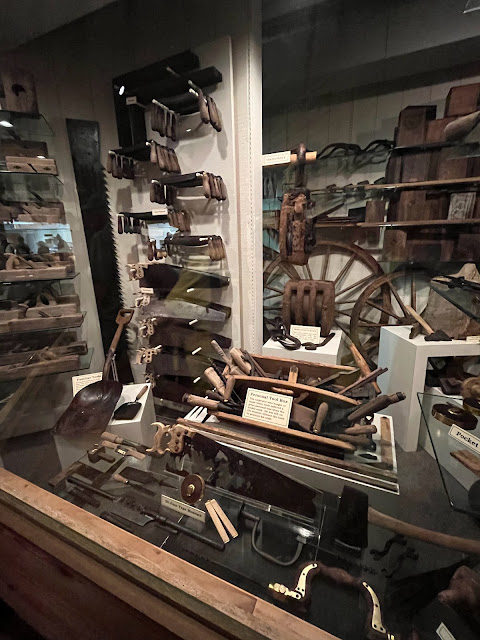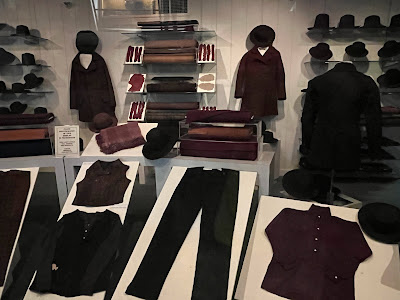While in the Kansas City area we visited the Arabia Steamboat Museum. I have to be honest and say that it didn't sound all that interesting. And, I have to confess that I was in awe of everything I learned and saw!
The Steamboat Arabia was built in Pennsylvania in 1853. The steamboat plied the waters of the Missouri River, carrying up to 222 tons of cargo, as well as passengers. The cargo included tools and equipment for settlers to the west, as well as goods for families that were settling there. On September 5, 1856, the steamboat hit a submerged snag, a fallen tree. It sunk within a matter of minutes. 150 passengers and crew made it safely to shore. The only casualty was a donkey that had been tied by his reins. The museum staff settled on the name "Lawrence" (of Arabia) for the mule. His bones are on display. The majority of the cargo was lost below the surface of the river.

In 1988 an air conditioner technician serviced a unit for a gentleman in the Kansas City area who was enamored with sunken ships. It is said that David Hawley shared that enthusiasm with his brother, father and a restauranteur over lunch. (Greg Hawley, Bob Hawley and Bob Mackey. They used historical records to plot the historical position of the Missouri River, and possible locations of the lost ship. They used strong metal detectors and finally discovered what most likely was the 171 foot steamboat, 45' under a farmer's cornfield. They brought in a fifth member of the team, David Luttrell, the owner of a construction business.
The group had a small window of opportunity to complete the excavation, taking advantage of the frozen ground in the winter months which also had less ground water. Regardless, they still had to have 20 very powerful pumps to keep water out. The men discovered, collected, cleaned and preserved the largest collection of pre-Civil War artifacts in the world. (They are still working on cleaning and preserving items.) The group decided not to sell anything from the collection, but to open a museum to share this treasure trove with the public.
Here are just a few pictures of some of the displays of items that were in the cargo of the steamboat. I was amazed by the variety and quantity of items.
All of the items on display had to be cleaned, preserved and in some cases repaired. Wood items had to be treated with polyethylene glycol over a period of time. Leather items had to be cleaned and most often restitched. Cotton fibers disintegrate in water over a long period of time. The shoes and boots had to be put on forms and very slowly dried. Woolens survived, but cotton and linen did not. Some crates that had contained shirts were reduced to a mushy mess with buttons. Rust formed on metal objects had to be scraped off and buffed with erasers.
There are still bins of frozen artifacts that have not been cleaned or preserved. Preservationists were working on items when we visited the museum.
David Hawley, one of the team members discovering the steamship, was at the museum and came and talked to our group briefly. I was curious as to what the farmer thought about their interest. David reported that the farmer was intrigued (and had heard rumors of a buried steamboat previously) and allowed them to excavate the steamship, as long as it didn't interfere with his corn planting in the spring!













How interesting! Awesome that all the artifacts are being displayed!
ReplyDeleteI had to go and read about the erosion that happened so that it ended up on the farmers field!
ReplyDelete